- Madrid
- Ysaye
- Frankel
- Sándor Balassa
- Edinburgh International Festival
- Schindler's List
- Emily Su
- Maddy Aldis-Evans: Woven
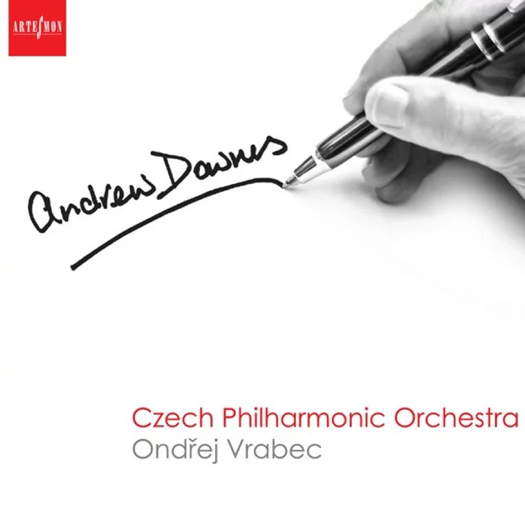 SPONSORED: CD Spotlight. On Buoyant Form - Orchestral music by Andrew Downes, heard by Roderic Dunnett.
SPONSORED: CD Spotlight. On Buoyant Form - Orchestral music by Andrew Downes, heard by Roderic Dunnett.
All sponsored features >>
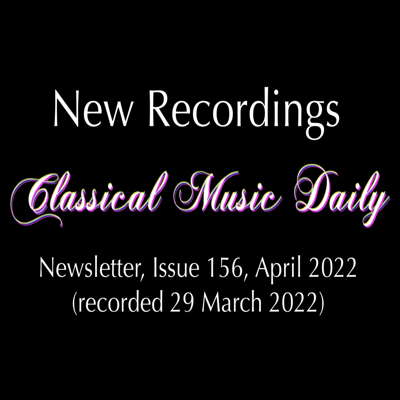 VIDEO PODCAST: New Recordings - Find out about Adrian Williams, Andriy Lehki, African Pianism, Heinrich Schütz and Walter Arlen, and meet Stephen Sutton of Divine Art Recordings, conductor Kenneth Woods, composer Graham Williams and others.
VIDEO PODCAST: New Recordings - Find out about Adrian Williams, Andriy Lehki, African Pianism, Heinrich Schütz and Walter Arlen, and meet Stephen Sutton of Divine Art Recordings, conductor Kenneth Woods, composer Graham Williams and others.
Innovative for the Time
GIUSEPPE PENNISI discovers Nicola Bonifacio Logroscino's Stabat Mater at the Ravello Festival
After leaving a main highway and climbing on a challenging mountain road, I reached Ravello, a small a town situated above the Amalfi Coast in the province of Salerno, Campania, Southern Italy, with approximately 2,500 inhabitants. Its scenic location makes it a popular tourist destination. In addition, it earned a listing as a UNESCO World Heritage Site in 1997. The town has served historically as a destination for artists, musicians and writers, including Richard Wagner, Edvard Grieg, M C Escher, Virginia Woolf, Greta Garbo, Gore Vidal, André Gide, Joan Mirò, Truman Capote, Tennessee Williams, Graham Greene, Jacqueline Kennedy, Leonard Bernstein and Sara Teasdale (who mentioned it in her prefatory dedication in Love Song). According to a legend, Wagner visited Ravello for just a couple of days. He was with his stage set designer; the story relates that Ravello's gardens, especially those of the Villa Rufolo, inspired the second act setting of Parsifal. Now, in Ravello's main square (surrounded by small lanes and steps), there are coffee bars named Kundry and Klingsor. More importantly, the Wagner tradition has been the lock pit for concerts in the Villa Rufolo since the 1930s. A summer festival has been held since 1953 with performances normally scheduled during weekends.
I visited Ravello on 4 and 5 September for two concerts, one in the Cathedral and the other on Villa Rufolo Belvedere. In this report, I review the former. In another review, I will deal with the latter.
In the Duomo di Ravello, the ensemble Talent Vulcanici performed a rarity that was a real discovery for me: Stabat Mater by Nicola Bonifacio Logroscino, an eighteenth century author, quite popular in his time, but now almost unknown.
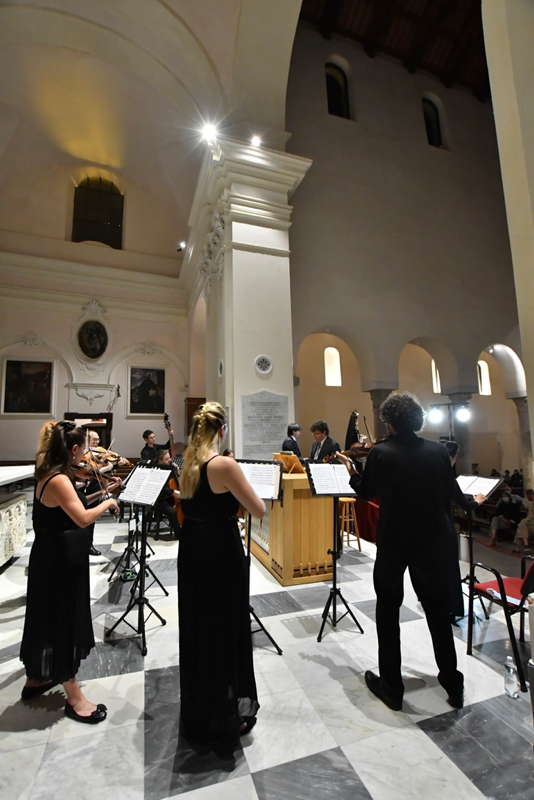
Talent Vulcanici performing Logroscino's Stabat Mater in the Duomo di Ravello at the Ravello Festival. Photo © 2020 Pino Izzo
Most of his scores have been lost and there is such scarce literature about him that he was not included in the series of composers of the 'Neapolitan School', presented by Riccardo Muti in the years when he was director of the Salzburg Whitsun Festival.
Nicola Bonifacio (born in Bitonto in 1698) and his brother Pietro were admitted to the Conservatory of Santa Maria di Loreto in Naples in 1727 but a few months later both brothers were expelled for some of their bad qualities - ie for having behaved inappropriately. Peter was re-admitted, but not his brother. In 1728, Nicola became organist for the Archbishop of Conza until 1731, when he returned to Naples to marry. His first composition, of which the date of its first performance is known, was the oratorio Il mondo trionfante nella concezione di Maria sempre Vergine, performed in 1730 near Brno at the court of Cardinal von Schrattenbach. This is a clear indication that in a short time he had acquired a remarkable fame. In 1735, his first comic opera Lo creduto infedele was staged in Naples. Two other comic works followed: Tanto ben che male and Il vecchio marito. His first great success was in 1738 in Rome with the heroic music drama Il Quinto Fabio. From this moment on, an intense operatic activity began; he composed a copious number of comic works, all staged with success. His fame began to decline from 1757-58 when Nicola Piccinni became the preferred composer of this operatic style in Naples. In 1758, he moved to Palermo to take up the prestigious position of chapel master at the Collegio dei Figlioli Dispersi. He died in Palermo in 1764 or 1765 - the precise date is not certain.
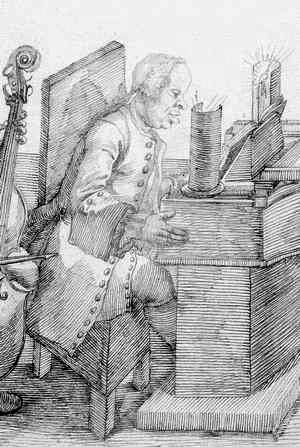
Nicola Bonifacio Logroscino (1698-c1765)
For composers of those times, writing a Stabat Mater was almost a professional exercise that they learned in their studies. The long text, twenty sections of three verses each, is divided into various numbers to create arias and duets. Logroscino also introduces recitatives. The work was composed in 1760, so in the last phase of the author's life, not as a career preparation topic. Giovanni Battista Pergolesi's Stabat Mater, completed in 1736, represented a watershed in the history of musical adaptations of this ancient medieval sequence. The one written by Logroscino more than a quarter of a century later undoubtedly has elements of this illustrious model: it takes up the same organic, follows the structure almost in full, but accentuates, diversifying, some stylistic-formal components. However, it is markedly different from the Pergolesian one, which I was lucky enough to hear live, about ten years ago, in Jesi in a magnificent production conducted by Claudio Abbado. While Pergolesi emphasizes suffering, Logroscino is highly dramatic, especially as rendered by the Talenti Vulcanici led by Stefano Demicheli on 4 September 2020.
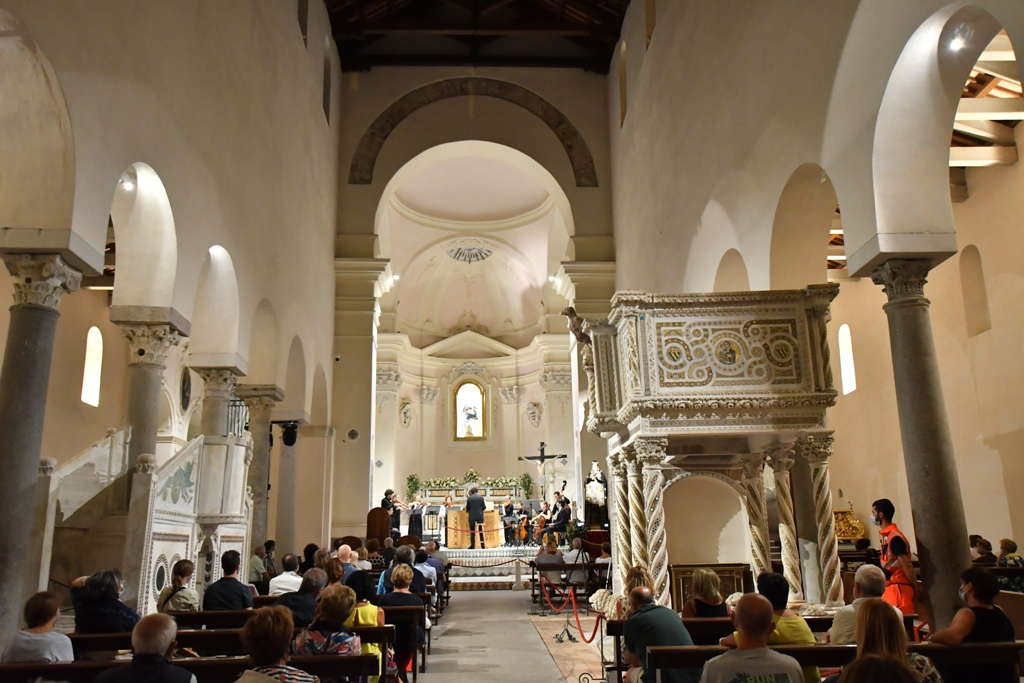
Stefano Demicheli and Talenti Vulcanici performing Logroscino's Stabat Mater in the Duomo di Ravello as part of the Ravello Festival. Photo © 2020 Pino Izzo
There is undoubtedly the experience of Logroscino's serious operas, of which little or almost nothing is known. With the fundamental contribution of soprano Silvia Frigato and countertenor Carlo Vistoli, this sacred page unveils a bursting charge of expressiveness expertly obtained by combining an intense as composed 'spiritual' drama with a strong profane melodramatic accent. By alternating arias, duets and recitatives, Logroscino highlights emotional participation, elegance of writing and variety of accents. He achieves extremely good results in some splendid arias such as 'O quam tristis et afflicta' and 'Sancta Mater, istud agas'. The interpretive approach of Demicheli and the ensemble, but above all the singing skills of the two solo voices, highlight the drama. The cunning and skilful use of counterpoint and of the cellos in their dialogues with the other strings as well as in their support of the voices are innovative for the time.
Silvia Frigato is a coloratura soprano with serious opera accents and Carlo Vistoli the recently appreciated countertenor, for example, in Gluck's Orfeo at the Rome Opera House - read A Noble Simplicity, 18 March 2019. They have a perfect weaving for the two roles. They soar to the dome of Ravello's Cathedral in their final great duet.
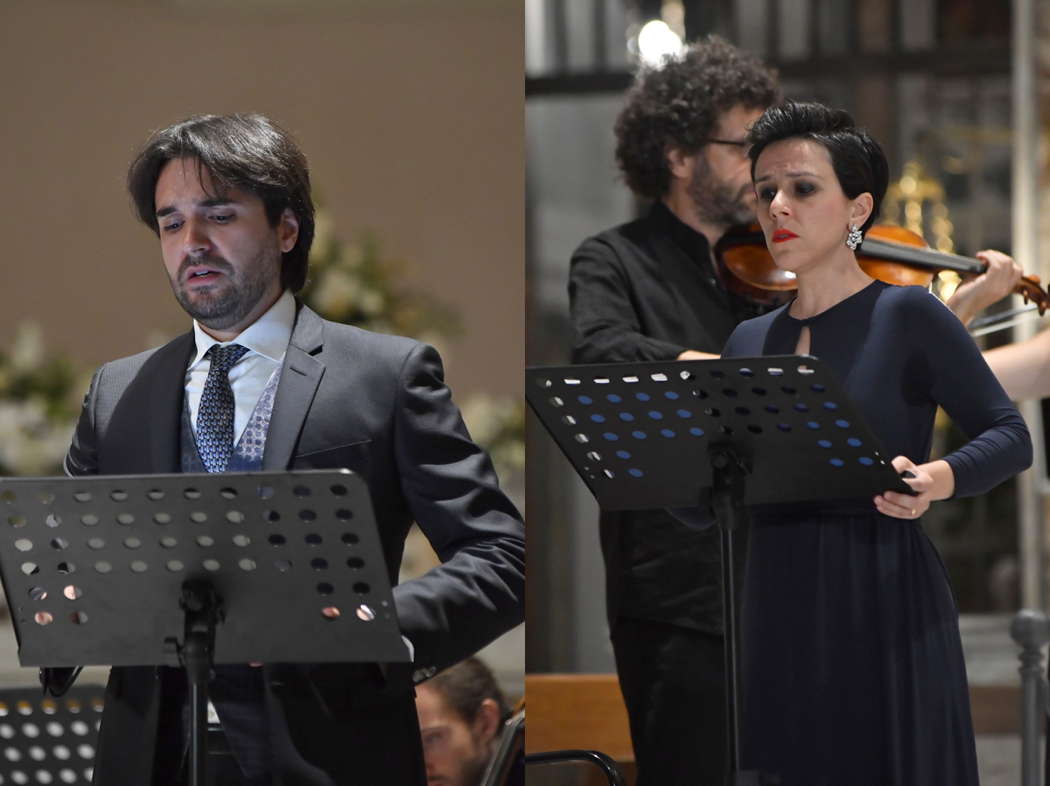
A photomontage of Carlo Vistoli and Silvia Frigato performing solo roles in Logroscino's Stabat Mater. Photos © 2020 Pino Izzo
Applause and accolades followed.
Copyright © 7 September 2020
Giuseppe Pennisi,
Rome, Italy

FURTHER INFORMATION: RAVELLO FESTIVAL
FURTHER LIVE CONCERT AND OPERA REVIEWS


